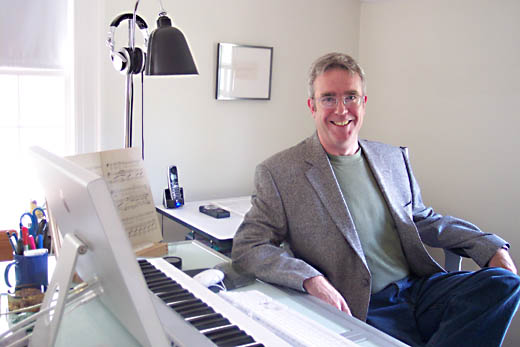Here’s the first in a series of interviews with composers who are premiering new works at the 10th Annual Outsound New Music Summit in San Francisco on Friday, July 22nd. The Friday night concert, entitled The Art of Composition, starts at 8 pm at the Community Music Center, 544 Capp Street, San Francisco. Tickets are available online from Brown Paper Tickets, and you can also buy them at the door. Listeners who don’t want to wait that long can get up close and personal with the composers, and learn about their creative process, at a free Monday night panel discussion at 7 pm on July 18th.
 Andrew Raffo Dewar (b.1975 Rosario, Argentina) is an Assistant Professor in New College at the University of Alabama. He’s a composer, improviser, soprano saxophonist and ethnomusicologist. He’s studied and/or performed with Steve Lacy, Anthony Braxton, Bill Dixon, Alvin Lucier, and Milo Fine. He has also had a long involvement with Indonesian traditional and experimental music. His work has been performed by the Flux Quartet, the Koto Phase ensemble and Sekar Anu. As an improviser and performer Andrew has shared the stage with a plethora of musicians worldwide, both the celebrated and the little-known.
Andrew Raffo Dewar (b.1975 Rosario, Argentina) is an Assistant Professor in New College at the University of Alabama. He’s a composer, improviser, soprano saxophonist and ethnomusicologist. He’s studied and/or performed with Steve Lacy, Anthony Braxton, Bill Dixon, Alvin Lucier, and Milo Fine. He has also had a long involvement with Indonesian traditional and experimental music. His work has been performed by the Flux Quartet, the Koto Phase ensemble and Sekar Anu. As an improviser and performer Andrew has shared the stage with a plethora of musicians worldwide, both the celebrated and the little-known.
As a member of his own Interactions Quartet, Andrew will premiere “Strata” (2011), dedicated to Eduardo Serón and inspired by the Argentine artist’s 2008 series of paintings, “La Libertad Es Redonda” (“Freedom is Round”). His description tells us that “Through a combination of improvisation and notation, performers negotiate several “layers” of written material, mixing and matching components that are eventually assembled into nested counterpoint.”
S21: You’re traveling quite a distance to premiere your piece at the Outsound Summit but it’s certainly not the first time you’ve been here. How did you become associated with the San Francisco Bay Area new music community?
I lived in Oakland for roughly two years (2000-2002) before heading off to graduate school at Wesleyan University in Connecticut to study with people like Anthony Braxton and Alvin Lucier. My first exposure to the Bay Area community was, if I remember correctly, a two-day workshop with legendary bassist/composer Alan Silva organized by Damon Smith at pianist Scott Looney’s performance space in West Oakland in 2000, which was an excellent experience. After that, I worked regularly — I think it was weekly — in a “guided improvisation” workshop ensemble at Looney’s organized by clarinetist Jacob Lindsay and guitarist Ernesto Diaz-Infante, and separate improvisation sessions with violist/composer Jorge Boehringer, which were both situations where I had the opportunity to play with many great Bay Area folks, like trumpeter Liz Albee and many others, which was wonderful. Around that time I was walking by guitarist/composer John Shiurba’s house with my horn, and he happened to be outside watering his garden. He asked me what kind of music I played, and I think the combination of the perplexed look on my face and my inability to answer his question easily is why we connected that day — he invited me in to chat, and when I saw a framed photo of Anthony Braxton on his mantle (whose work I’ve appreciated since my late teens, and who I’ve had the great opportunity to study and perform with) I knew I was “home.” (more…)










